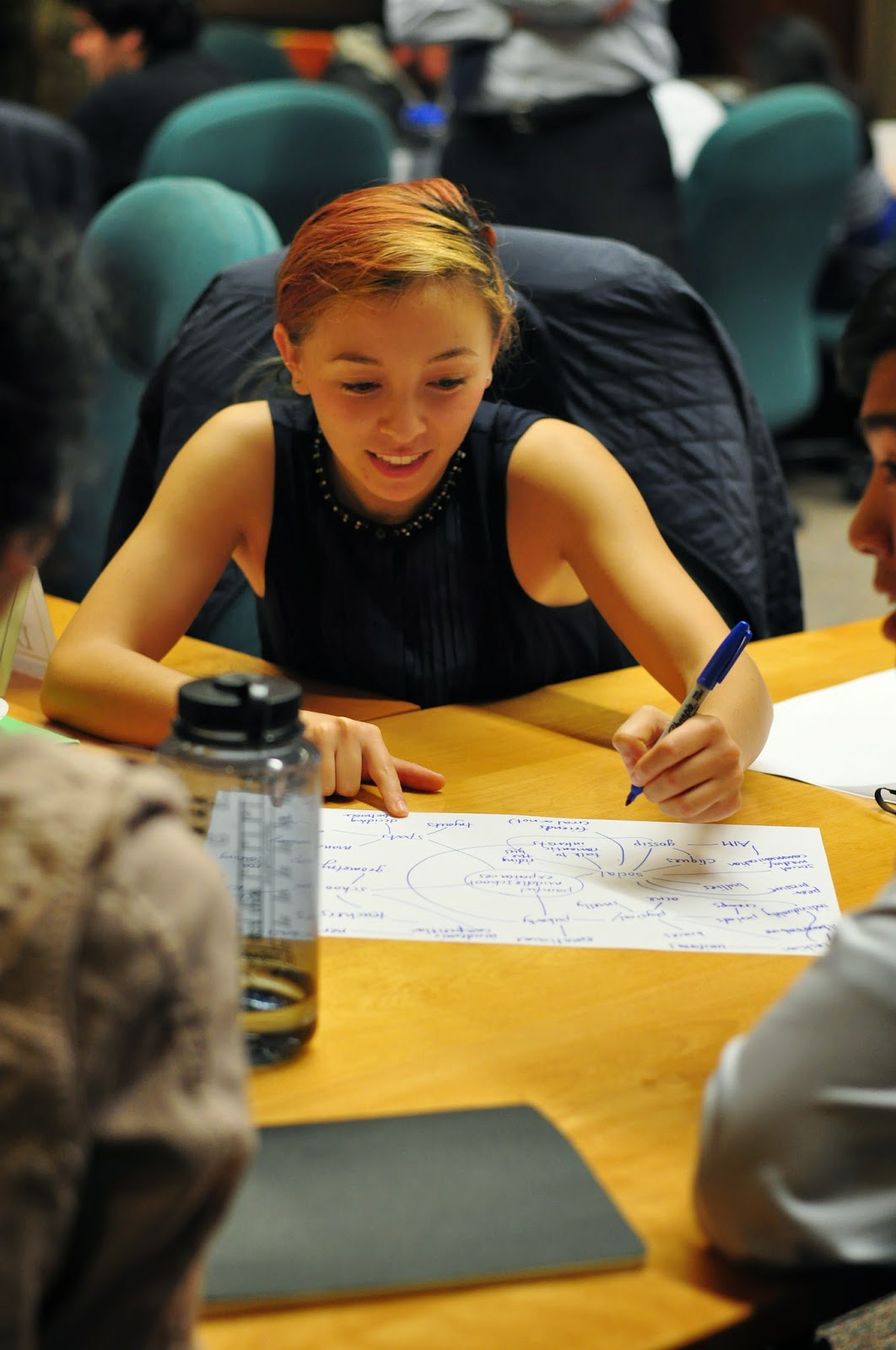- Public Policy
- Leadership
- Funding
- News & Events
- About the Center
Back to Top Nav
Back to Top Nav
Back to Top Nav
Back to Top Nav
This ongoing series explores sessions of the Rockefeller Leadership Fellows (RLF) program. RLF provides fellows with resources in leadership theories and practical skills. Selected their Junior Spring, these Seniors take part in the workshops, dinner discussions, and team-building exercises as they gain a better understanding of the qualities and responsibilities necessary for leaders and successful leadership styles.
How can an organization solve difficult problems? A natural first step for many is to look at the options presented and make tough decisions. But, as Thayer School of Engineering Professor Peter Robbie ’69 emphasized to the Rockefeller Leadership Fellows in a recent session, this approach is flawed. His message was clear: don’t make decisions, design better options. This sounded simple enough. As students of Professor Robbie’s Design Thinking course know, however, there are important structural considerations that enable creative thinking and collaboration.
 |
| Professor Robbie addresses the fellow, Photo by Malika Khurana |
Professor Robbie took us on a deep dive into two key steps of the design process. First, designers must define a problem in such a way as to present it as a challenge. The problem statement needs to be broad enough to invite a wide range of solutions, and it should not point toward an answer. While easy enough to understand, each step of the process is devised to not limit ideas. Enabling creative thinking is crucial to designing new solutions. When a team actually begins to develop solutions to the problems, several brainstorming tools aside from traditional listing are available.
One such imaginative tool for ideation is a provocative operation statement, or “Po statement.” Designed to get problem solvers to step outside of the familiar, Po statements alter our conception of the way the world operates, giving us an opportunity to create a new solution. For instance, a city that needs to alleviate parking pressures may use the following statement as a launching point: “Po cars limit their own parking.” This creates space for lateral thinking towards solutions, like requiring car owners to leave their headlights on when parking on Main Street. Collaborators must be willing to speculate, tolerate ambiguity, and believe in the power of envisioning.
 |
| Photo by Malika Khurana |
The fellows were then given the chance to test our newly learned methods on Dartmouth-specific areas for improvement. Working collaboratively, we approached residential life and social life concerns with the intent to create as many solutions as possible. While the ideas may never come to fruition, the process itself demonstrated the significant advantage that playful, safe, and focused creative collaboration can provide to solving community problems.
-Written by John Howard '15, 2014-2015 Rockefeller Leadership Fellow
Peter J. Robbie is a product designer, Associate Professor of Engineering and Lecturer in the Department of Engineering Sciences at Dartmouth. He's the founder and Co-Director of the Minor in Human-Centered Design. Robbie's research focus is medical imaging and treatment planning. He was a co-founder of Medical Media Systems (MMS now M2S) where he was senior vice president for product design and clinical affairs. M2S is now an industry leader in imaging technology for treatment planning. His team designed and developed an advanced imaging system, Preview Treatment Planning Software, which received FDA and HICFA approvals for advanced minimally invasive procedures such as endovascular repair of aortic aneurysms. Currently he is a consultant on the design team for the MIST Project, a microwave imaging system for detection of breast cancer. At Dartmouth Robbie teaches courses in Product Design, Design Thinking, and Healthcare Technology; his focus on creative problem solving and design for human use. He is also the faculty advisor for several student groups: Casual Thursday, the Dodecaphonics, and D-Roots. He received an AB from Dartmouth (1969) and an MFA from Cornell University (1972) and for several years taught three-dimensional design in the Visual Studies program at Dartmouth. He is a professional member of the Industrial Design Society of America (IDSA) and has served as a design consultant for several corporations.